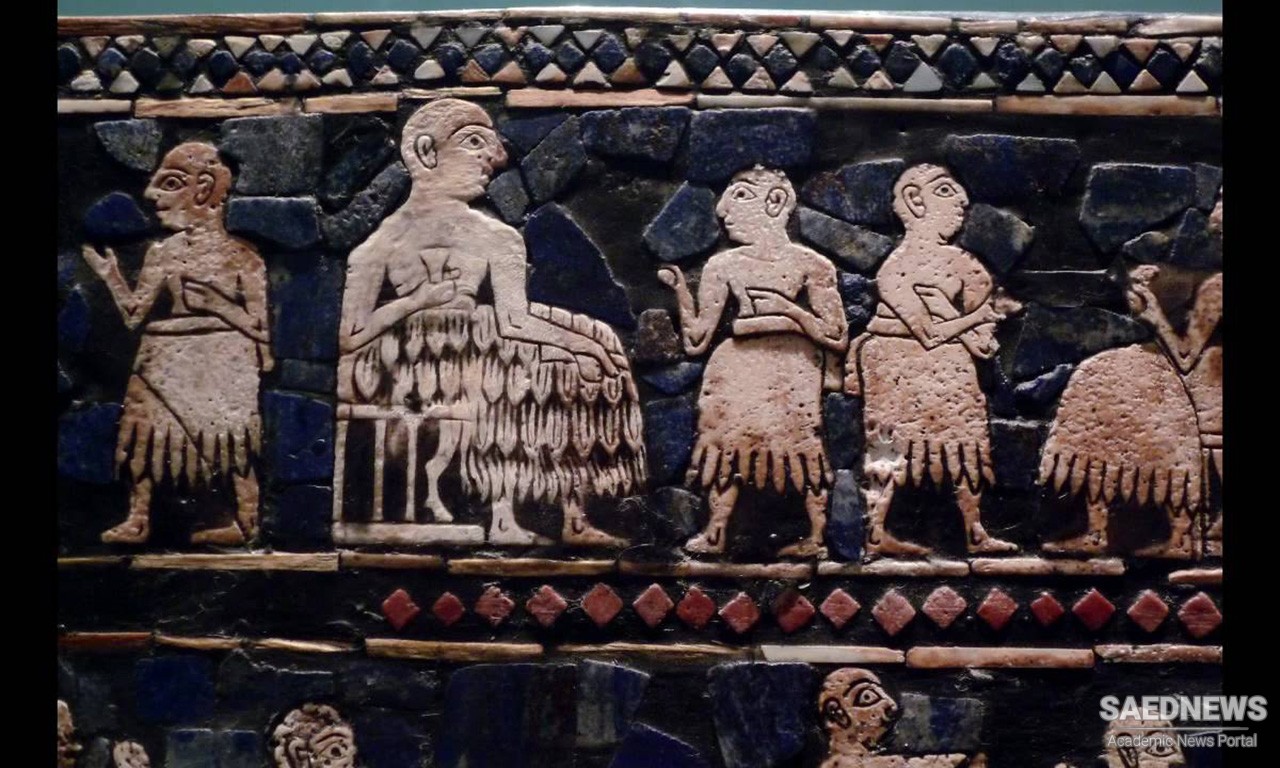It is no more the ‘people’ that play and sing for magic, devotional and social purposes, but a distinct class, or even caste, of musicians. From this moment, instruments can be divided into two kinds—popular instruments and instruments used by professional artists. The latter evolve in the direction of greater musical effectiveness and easier manipulation.
The history of these higher civilizations begins in Mesopotamia, the once fertile plain between the rivers Tigris and Euphrates. Her first rulers were the Sumerians, a people of uncertain race who seem to have come from a neighboring country farther east in the fifth millennium B.C. Contemporaries of the Old Kingdom of Egypt, the Sumerian dynasties were replaced before 2000 B.C. by the Babylonians, a Semitic people who were contemporaneous with the Middle Kingdom in Egypt. At about 1750 B.C., the Kassites, a non-Semitic people, invaded from the east and reigned in Mesopotamia until about 1100 B.C. In the last millennium B.C., Mesopotamia was ruled successively by Assyrians and Babylonians (the Dynasty of King Nebuchadrezzar and the Babylonian Exile of the Jews), by Medes and Persians, and finally by Greeks. The reader may compare the following synopsis.
The two chief languages used in Mesopotamia were Sumerian and Akkadian. Sumerian was a non-Semitic language; Akkadian, comprising Babylonian and Assyrian, was Semitic. As long as Sumerian was generally spoken, the Sumerian names of ritual objects passed from this language into Akkadian and were only slightly transformed according to its phonetic and grammatical rules. Later, when Sumerian was used only as a holy language in the temple, while Akkadian had become the current language, the Akkadian names of newly introduced objects were taken into the Sumerian language. In consequence, most Sumerian names had an Akkadian equivalent, no matter whether the Sumerian or the Akkadian form was the original.
Very few musical instruments have been excavated in Mesopotamia, and most of them were found in the royal cemetery at Ur, Abraham’s native town. However, there are many reliefs and plaques, seals and mosaics, from a period extending over three thousand years, that depict players and musical scenes. Cuneiform written texts in Sumerian or Akkadian contain a quantity of names of musical instruments.
The scholar’s task of compiling the actual instruments excavated from Mesopotamian soil, as well as the depicted instruments, and matching them to the few names given in contemporaneous texts is particularly difficult. A few ideograms can be traced back to pictures of things: an ear of corn, a bull’s head, a hand, a man, a door. In the advanced cuneiform script the original pictures are so schematized that they are unrecognizable, and it is impossible to deduce the form of an instrument from the particular arrangement of the wedges in the cuneiform ideogram of its name. If the ideograms had been recognizable even in their time, the Sumerians would not have helped the reader by occasional determinatives, that is, specifying prefixes to make up for the ambiguity of the phonetic symbols. With musical instruments, such determinatives indicate the material of which they are made: kuš or šu—‘skin,’ giš—‘cane,’ giš—‘wood,’ urudu—‘metal.’


 Ancient Persian and the Consolidation of the Parthian Kingdom
Ancient Persian and the Consolidation of the Parthian Kingdom














































